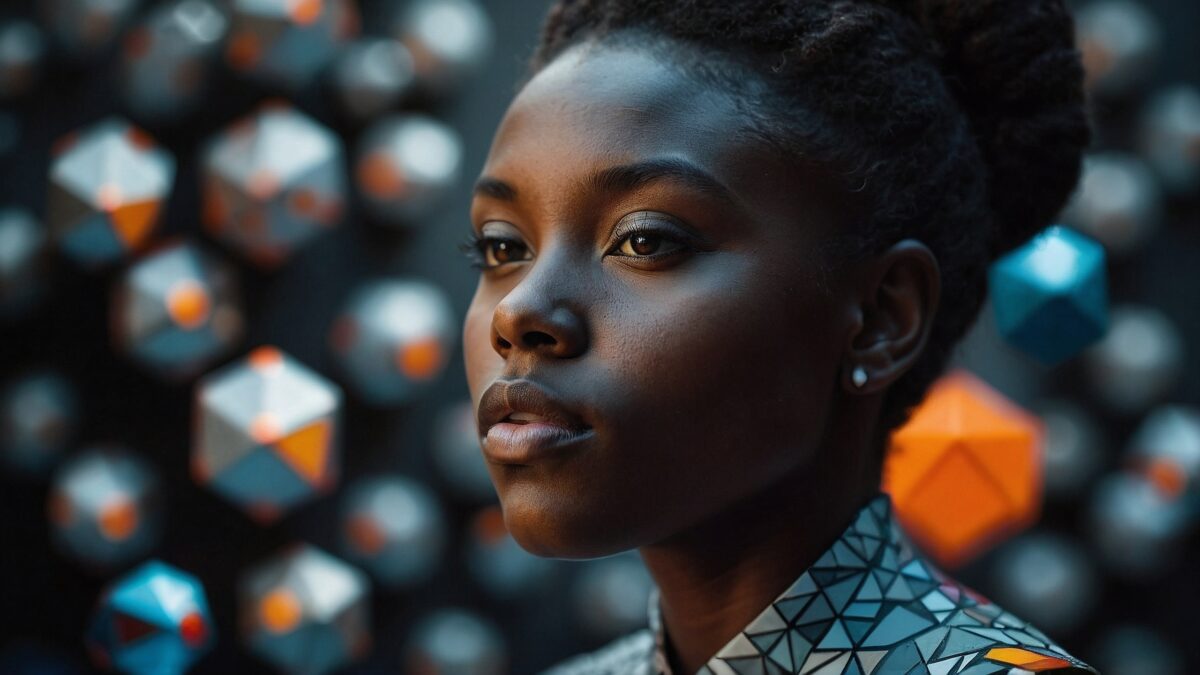Before diving into the impact of AI, it’s important to understand how far we’ve come in a very short time. The design industry has undergone a remarkable evolution, transitioning from exclusively manual processes to leveraging AI tools that augment rather than replace the creative process.
AI tools are evolving rapidly, making it challenging for designers to keep up. Each tool improves as its AI engine learns from our inputs and feedback. You might say that the relationship is begrudgingly becoming symbiotic.
By automating repetitive production tasks and broadening creative inspiration sourcing, AI is allowing us to concentrate on innovation and quality, propelling the industry forward to new levels of productivity.
Our current go-to AI tools
We’ve tested several and committed to those offering the most significant benefits, helping us to learn as much from AI as it learns from us.
Midjourney
Midjourney stands out by generating vibrant, detailed, and abstract art. It is highly effective at creating realistic imagery and stands out for its ability to produce energetic, colorful visuals. While it doesn’t support custom model training, it provides an extensive library of pre-trained models, ensuring versatility. Crafting effective prompts in Midjourney requires specificity and clarity, underscoring the importance of mastering the rules and techniques for prompt creation. Achieving creative control may involve some experimentation but the results are well worth the effort.

Leonardo.ai
Leonardo AI distinguishes itself from other leading Gen AI tools with it’s Canvas tools that deliver a degree of precision and flexibility beyond the typical prompt-to-image generation.
Realtime Canvas is a tool generates finished art from rough sketch inputs, offering instant visual feedback and quick editing capabilities. It speeds up asset creation, accelerates prototyping for real-time experimentation.
The Canvas Editor is a robust image editing tool that enables users to make detailed adjustments, remove unwanted elements, and generate new content through advanced inpainting and outpainting techniques. This tool provides full granular control over image alterations, allowing for powerful and precise refinements.
Both AI tools offer distinct advantages: Leonardo AI focuses on customization and precise control, while Midjourney excels in creating vivid, dynamic visuals.
Adobe suite AI
The Adobe suite AI has improved our design workflows by automating simple but time-consuming tasks, enhancing our ability to rapidly prototype, and significantly improving our finishing efficiency.
For specific elements of our design work, we combine stock photos with illustrations to craft engaging visuals for blog articles. While finding the perfect image can be challenging, Generative AI in Photoshop is a tremendous help. It enables us to precisely modify images, adding or removing elements while preserving the integrity of the story.

Our production workflows utilize these tools in concert to achieve the specific outcomes our designers and clients are aiming for.
However, it’s important to note that integrating these AI tools into our existing processes wasn’t without its challenges. We had to invest time in learning how to use the tools effectively and adapt our workflows to accommodate them. Despite these initial hurdles, the transformation has been significant, highlighting how AI can elevate the creative process, allowing designers to focus more on innovation and less on routine tasks, ultimately improving both productivity and output quality.
The Role of AI in User Experience(UX) Design
AI is playing an increasingly prominent role in shaping User experience (UX) design. AI-powered predictive analytics forecast user behavior, allowing designers to anticipate needs and create more intuitive interfaces. By analyzing data and identifying patterns, AI provides insights into user interactions, leading to informed design decisions. Moreover, AI can create adaptive user interfaces that evolve based on user behavior and preferences, ensuring the interface remains relevant and engaging. This approach significantly improves the overall user experience.
Galileo AI is a revolutionary design tool that converts brief text descriptions into editable user interface designs instantly. By producing high-quality visuals and concepts from textual inputs, it speeds up the ideation process and provides a diverse range of creative options. This powerful capability enabled us to rapidly visualize and refine our ideas.
Using Generative AI to Scale Design Process
AI-powered design assistants can handle repetitive and time-consuming tasks, such as resizing images, text formatting and adjusting layouts. Tools like Adobe Sensei automate these processes, freeing up designer’s time to focus on more strategic and creative aspects of their projects.
Moreover, AI can aid in selecting colour palettes, pairing fonts, and tagging images, ensuring cohesive and visually appealing design elements.
AI enables designers to create unique experiences for users by analyzing data and predicting preferences. For instance, AI algorithms can analyze user behaviour on a website or app to tailor the design and content to individual users, enhancing engagement and satisfaction.
- Nike used AI to create custom shoe designs based on user preferences. By analyzing data from users’ interactions, Nike’s AI system generated personalized shoe designs, enhancing the customer experience and boosting sales.
- IBM uses its AI, Watson, to assist in designing marketing campaigns. Watson analyzes consumer data to generate insights and create highly targeted and tailored marketing materials, improving campaign effectiveness.
At Base5 we are excited to see how this technology will enrich designers’ toolkits and streamline daily workflows. Our designers will no doubt continue to leverage AI tools to push creative boundaries, achieving design efficiencies we once considered impossible. We’re particularly interested in the emerging focus on multimodality which will enable AI models to simultaneously process diverse data types—text, images, and video—resulting in more integrated and versatile design tools.
Embracing these and other future AI advancements will be crucial for designers to remain competitive and leverage the full potential of AI as force multiplier for designers.
